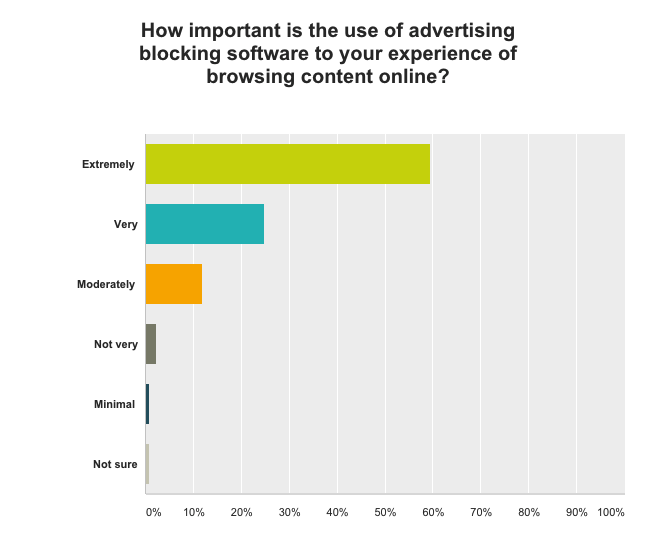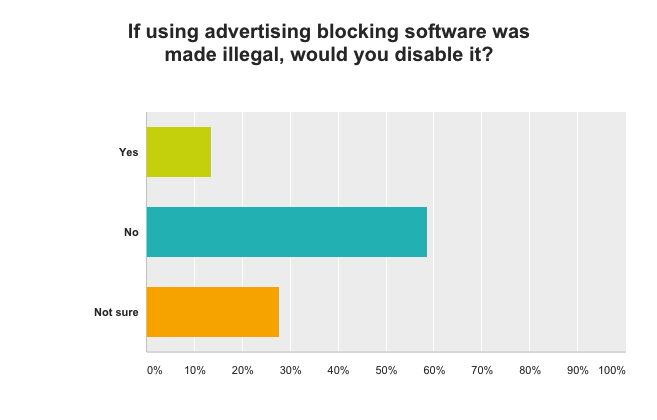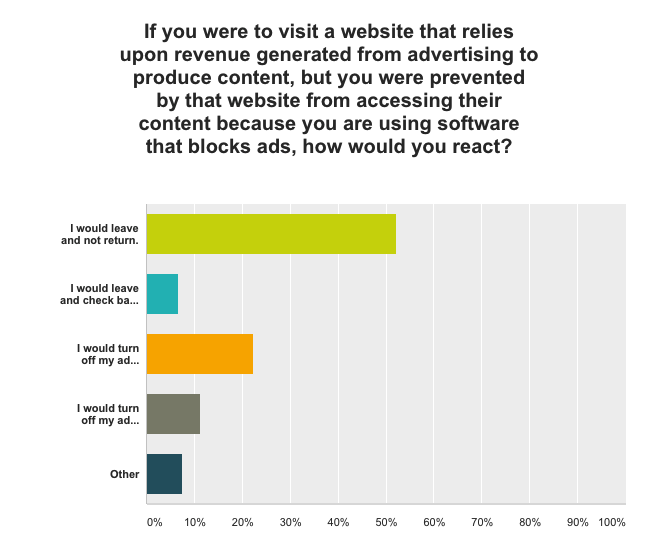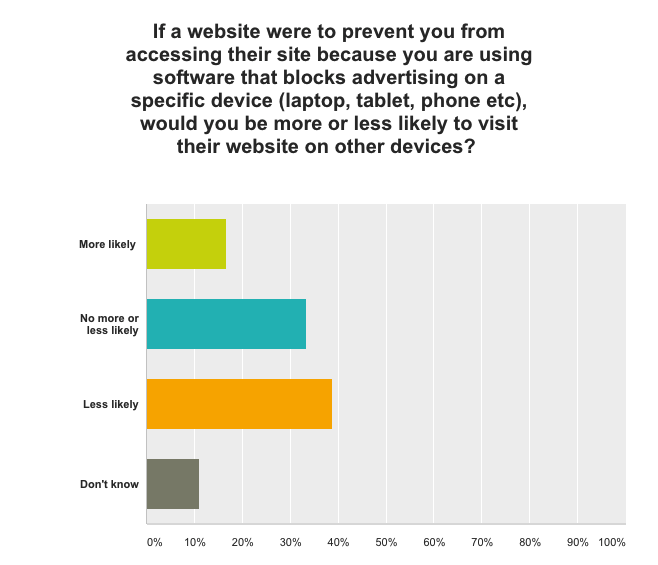In 2020 we experienced an emerging trend wherein a small number of publishers were starting to put up ‘plea walls’ against visitors with ad blocking software running, thereby denying them access to content unless they deactivated their blocker.
Since then, several other publishers have followed suit, all who’ve implemented their own plea wall strategies in slightly different ways.
One concern we have is that the metrics used to assess the success of these experiments, in published results, relies heavily upon ad impression related figures – such as ‘how many ad impressions were recovered’ and ‘what % of users deactivated their ad blocker when prompted to do so’.
User experience hasn’t really had much attention, when arguably it should receive the most. Ultimately, poor digital ad experiences are the root cause of ad blocking adoption, so it is vital to measure this if the objective is to build a sustainable ecosystem.
To gain some insight into this, we asked ad blocker users how they felt about publishers blocking access to content, and how this approach may affect their future content consumption behaviour.
In total we surveyed 322 consumers, all of whom were actively running ad blocking software at the time of taking the survey.
Here’s what they said.
First and foremost ad blockers were, unsurprisingly, considered a near necessity by their users. Exactly 59.48% of respondents rated ad blockers as ‘extremely’ important, whilst 24.91% rated them as ‘very’ important to their online browsing experiences – collectively 84.39%.

User loyalty to ad blockers was further emphasised by the fact that 58.65% of respondents would not disable their ad blocker even if they were made illegal, 27.82% were ‘not sure’.

If a publisher were to put up a plea wall, 52.16% of respondents said they ‘would leave and not return’, 6.67% said they would ‘leave and check back later’, 22.35% said they would turn off their ad blocker for that website ‘to see if the ads were tolerable’, and 11.37% said they would ‘turn off their ad blocker’ for that website regardless.

Interestingly, 38.89% of respondents said they would be ‘less likely’ to visit the same site on their other devices if a publisher were to put up a plea wall, where they may or may not have ad blocking software running.

Even more, at 46.35%, said they would be less likely to use other services a publisher may offer as a result of their content denial experience – such as newsletters, e-commerce offerings, TV channels or newspapers.

For users who declared they would not be willing to disable their ad blocker when presented with a plea wall, 60% said the reason for this was because they did not want to be tracked by advertisers, 53.33% said they did not want to see the advertising the publisher had to offer, 43.64% said advertising slows down their web browsing experience, and 24.85% said it was ‘out of principal’ because it is not illegal to use an ad blocker. Just 2.42% said it was because they were unable to turn off their ad blocker.

For users who declared they would be willing to disable their ad blocker when presented with a plea wall, there were a variety of reasons for this, 51.19% said it depended upon the website – if the advertising was tolerable they would accept it, 16.67% said they wanted to support the website financially – even if the ads annoy them, 15.48% said advertising doesn’t bother them enough to warrant not being able to access content, and 11.90% said they would disable their ad blocker if they were unable to find the same or similar content elsewhere.

In a scenario where a user has disabled their ad blocking software and advertising has been restored, 20.48% of respondents said they would ‘dislike it’ that brands were marketing their products to them, while 19.28% said they would ‘neither like nor dislike’ it that brands where marketing to them. The largest portion of respondents, at 46.99%, said the way in which brands were marketing to them would most influence how they felt about being advertised too by those brands.

Two big themes stand out in these responses. The first is, since most ad blocker users hold the use of the software in such high regard, publishers will have to sacrifice the majority of this audience if they choose to put up plea walls. More notably, the impact of this stretches beyond ad blocking visits alone. Their appetite to consume the overall package of services that a publisher has to offer diminishes – whether that be accessing publisher content on other devices (where there is likely no ad blocking occurring on mobile) or other product offerings such as newsletters, TV channels or newspapers/magazines.
The second big theme that stands out effects the respondents that were willing to disable their ad blocker. Around half of this group indicated the reason they were willing to disable their ad blocker was on the basis that they subsequently found the underlying advertising experience to be tolerable. This suggests if they do not find the ad experience to be tolerable, there is a limited amount of time before they will reenable their ad blocker or not visit the site entirely. Asking the same visitor to deactivate their ad blocker for a second time thereafter will be more challenging, so it is imperative to gain their trust first time by rebuilding ad experiences from the ground up in a user friendly manner.





